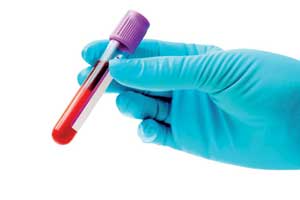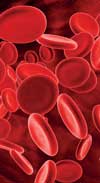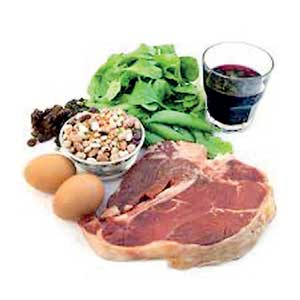Reply To:
Name - Reply Comment
 It’s very likely that you are familiar with the term ‘Anaemia’. But did you know that approximately 41% of children who are of pre-school age and 37% of non-pregnant females in the world, according to the WHO, are suffering from anaemia? Anaemia is a complex subject to
It’s very likely that you are familiar with the term ‘Anaemia’. But did you know that approximately 41% of children who are of pre-school age and 37% of non-pregnant females in the world, according to the WHO, are suffering from anaemia? Anaemia is a complex subject to  discuss. But it’s important to have a basic understanding of the conditions related to the disease and the facts surrounding it, specially considering the high prevalence of anaemia. That is why ‘Health Capsule’ decided to consult Dr. K.A.C Wickramaratne, Consultant Haematologist and Senior Lecturer at the Faculty of Medicine, University of Ruhuna, Galle regarding ‘Iron Deficiency Anaemia’, the most common type of anaemias
discuss. But it’s important to have a basic understanding of the conditions related to the disease and the facts surrounding it, specially considering the high prevalence of anaemia. That is why ‘Health Capsule’ decided to consult Dr. K.A.C Wickramaratne, Consultant Haematologist and Senior Lecturer at the Faculty of Medicine, University of Ruhuna, Galle regarding ‘Iron Deficiency Anaemia’, the most common type of anaemias
It’s not a disease
“Anaemia is not a disease, but a manifestation of a disease”, said Dr. Wickramaratne. Anaemia isn’t the disease itself, but it’s about how the disease presents to the outside. Similarly, if we have anaemia, that means there is an underlying cause for it and we need to find that out and treat the cause itself to find a permanent cure.
 In order to understand what anaemia is, first we need to understand that blood has different components. One of these components, Red Blood Cells (RBC) has a pigment called Haemoglobin (Hb), which aids in transportation of oxygen to the body tissues. The amount of Hb that is within a person’s body depends on age, sex and the physiological status of the individual. “Newborn babies have the highest reading of Hb, which subsides within a few weeks after birth. Males usually have higher values than females and pregnant females usually have lower values,” explained the doctor. If a person has a hemoglobin value below the expected lower limit, he or she is said to have anaemia.
In order to understand what anaemia is, first we need to understand that blood has different components. One of these components, Red Blood Cells (RBC) has a pigment called Haemoglobin (Hb), which aids in transportation of oxygen to the body tissues. The amount of Hb that is within a person’s body depends on age, sex and the physiological status of the individual. “Newborn babies have the highest reading of Hb, which subsides within a few weeks after birth. Males usually have higher values than females and pregnant females usually have lower values,” explained the doctor. If a person has a hemoglobin value below the expected lower limit, he or she is said to have anaemia.
The production of hemoglobin requires three main nutritional components: Iron, Vitamin B12 and Folic acid. If the production of Hb is low due to the deficiency of Iron, it’s called Iron Deficiency Anaemia (IDA).
 Disease Presentation
Disease Presentation
Anaemia in most cases presents itself with non specific symptoms, according to Dr. Wickramaratne. “The reason is because this condition usually develops over a long time. Therefore, the body adapts to the lack of Hb, gradually making compensations,” he continued.
Lethargy, weakness and being easily tired are the main symptoms of anaemia. The patient may complain that even though he climbed a flight of stairs easily a few months ago, now he gets exhausted after doing so. A person who was used to vigorous exercise may now find it impossible to carry on exercising beyond a few minutes. They may feel faintish when standing for long. The students may show low performance and lack concentration in school. Such people get scolded for being ‘lazy’.
One specific symptom for IDA is the condition called ‘picca’ where the patient gets the desire to eat non-food items like clay, chalk, pastel, charcoal and raw rice or dhal etc. Other symptoms like brittle nails, nail changes and loss of hair can be present. “ Few decades ago we got patients presenting with a difficulty to swallow, due to web formation in gullet caused by severe long standing anaemia”, he said adding that these type of cases are quite rare at present. Hemoglobin in RBC is what keeps the blood red. This gives the pinkish colour to our sclera, tongue and lips. Therefore anaemic patients may present with pale skin, sclera and lips, according to the doctor.
Whys and Hows of IDA
The deficiency of iron can be due to three main causes, according to Dr.Wickramaratne.
The first is due to the deficiency of iron in the diet. Even though Iron is a common compound in the earth’s crust, it’s usually in the Ferric (fe3+) form. But the body can only absorb iron when it is in Ferrous (fe2+) form. There are special mechanisms in the body, including gastric acidity, which converts ferric to ferrous form.
“The absorption of Iron to the body is tightly regulated and it is said that only 1/10 th of the Iron that is contained in our food is absorbed into our body,” explained Dr. Wickramaratne.
If the diet is ok and we are healthy, our bodies can have iron stores which can sustain us for about a year or more. Even though plant sources like green leaves have plenty of iron, they are usually not in absorbable form. “Animal sources like fish and meat are the richest sources of iron since they are in absorbable form”, stated the doctor.
The second cause of IDA is blood loss, which will lead to loss of iron along with it (as Hb). This may go unnoticed because blood loss doesn’t always have to be significant and visible. Small quantities of blood loss from conditions like reflux esophagitis, gastritis and haemorrhoids which continue for a long time, and cancer in bowels may result in a significant loss of iron over a period of time.
The main cause for anaemia in females of child-bearing age is excessive blood loss from menstruation. This condition usually referred to as ‘heavy periods’ may be hereditary and may go untreated because they consider it ‘normal’ and ignore the condition for years. “We have observed young girls of 16, 17 years presenting with severe anemia due to heavy menstruation,” said the doctor.
Another cause for anaemia in females is frequent, multiple pregnancies. “The foetus absorbs the iron that it needs from the body of the mother. Therefore if she goes through multiple pregnancies within a short period of time, without having a chance to replete the iron stores, she can face a deficiency of iron,” warned Dr. Wickramaratne.
Another cause for iron deficiency, which is worm infestation in gut, specially hook worm, is not common and can be avoided with the availability of appropriate sanitation.
 The final cause, although not very common, is the failure to absorb iron into the body. People who have celiac diseases or have undergone procedures like gastric bypass surgery are at risk. In addition, even when the food contains iron, there may be sources in the food itself that inhibit iron absorption. Some inhibitors in vegetables itself like calcium and phytate are examples. Drinking coffee or tea soon after a meal affects iron absorption since tannin and caffeine contained in those beverages are also inhibitors of iron absorption.
The final cause, although not very common, is the failure to absorb iron into the body. People who have celiac diseases or have undergone procedures like gastric bypass surgery are at risk. In addition, even when the food contains iron, there may be sources in the food itself that inhibit iron absorption. Some inhibitors in vegetables itself like calcium and phytate are examples. Drinking coffee or tea soon after a meal affects iron absorption since tannin and caffeine contained in those beverages are also inhibitors of iron absorption.
Gastric acidity is a crucial factor in the absorption of iron. Therefore people who are using over the counter drugs for gastric acidity for a long period of time are at risk of IDA. One reason for this is poor absorption and the untreated gastritis related concealed blood loss!
Effects
The usual effect is that due to the deficiency of Hb, the oxygen carrying capacity in blood is reduced. This results in reduced oxygen to the tissues including the brain. This causes an anaemic patient’s working capacity to drop.
Anaemia when severe, can affect the heart as well, because to compensate for the lack of oxygen the heart has to work harder. This may cause the heart to enlarge or create the condition called heart failure, in extreme cases. Anaemia, if associated with patients having narrowed blood vessels in the heart due to cholesterol, may easily give rise to heart attacks, said the doctor.
Anaemia in pregnancy will result in negative consequences for both the mother and the baby, including premature birth and restriction of the growth of the foetus resulting in low birth weight. And if there is sudden blood loss, they can easily go in to many ominous complications.
Investigations and Treatment
The main investigation for anaemia is the Full Blood Count followed by an investigation called the Blood Picture, according to Dr. Wickramaratne. Studies of the body’s iron stores are also done using blood tests if the doctor deems them necessary.
“Confirming anaemia doesn’t mean that you’ve identified the disease”, stressed the doctor. Identifying the cause of anaemia is crucial. A good history and examination with a detailed dietary history is essential and if the cause is not related to nutrition deficiency, various other tests need to be done to find the root cause. In addition to correcting the deficiency of iron, the cause also needs to be treated, regardless of whether it’s adjusting the diet, treating gastritis, or undergoing surgery for haemorroids.
The treatment for IDA varies from patient to patient. “A pregnant woman near her due date or a  person who has heart problems may need immediate blood transfusions while most patients would be recommended oral iron therapy. Monitoring the patient following treatment to determine the effect of treatment is essential since given that the treatment is ineffective, another treatment option may be needed,”, said Dr. Wickramaratne.
person who has heart problems may need immediate blood transfusions while most patients would be recommended oral iron therapy. Monitoring the patient following treatment to determine the effect of treatment is essential since given that the treatment is ineffective, another treatment option may be needed,”, said Dr. Wickramaratne.
Self Medication for anaemia is strictly inadvisable according to the doctor, since the root cause of the anaemia isn’t identified through this method. “In children, anemia may be a result of a more serious genetic condition like Thalassaemia, where the defect lies not in the deficiency of iron, but the production of RBC itself,” said the doctor. Similarly, in adults, anaemia may be the presentation of underlying cause of a condition like Chronic Kidney Disease or even bowel cancer. “If the patient is taking over the counter iron or nutrient supplementation without knowing the cause of anaemia, we may miss out the chance of early diagnosis and treatment of the disease, which greatly decreases his chance of survival,” he cautioned.
Prevention before cure
Is it possible to prevent Iron Deficiency Anemia through modifying our diet? Spacing childbirth, appropriate treatment for long periods, good sanitation etc would help. “In Sri Lanka we are used to cooking our vegetables and green leaves which destroys the vitamins that aids in absorbing iron into the body. Therefore adding a regular salad into your diet flavoured with lime juice (which favours iron absorption) is advisable. Having fresh fruits or fruit juice instead of having tea and coffee and taking calcium supplements directly after a meal is important. This is especially advised for people who are on a long term vegetarian diet,” concluded the doctor.